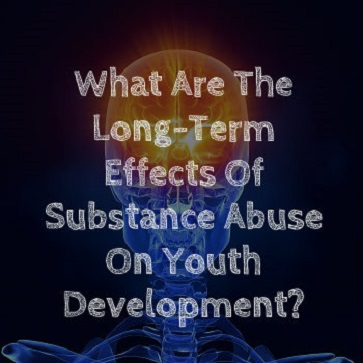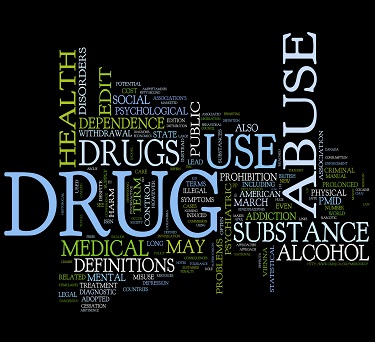13 Nov 2013
Why Is Drug Use Surging In Baby Boomers?
Statistics gathered by the Substance Abuse and Mental Health Services Administration, or SAMHSA, show a disturbing trend among older Americans. Members of the Baby Boom generation are using drugs and getting addicted to them in record numbers. Whether we can explain the trend or not, the fact remains that elder drug abuse presents some unique problems that require unique approaches for prevention and treatment.
 The statistics from SAMHSA show that among older Americans in recent years, marijuana use has increased five-fold, cocaine use has quadrupled, heroin abuse has doubled, and abuse of prescription drugs has more than quadrupled. The survey from SAMHSA also records treatment for drug abuse and addiction and found increases in the numbers of Boomers getting help for alcohol abuse in combination with cocaine use, and for abusing prescription painkillers. Emergency room visits for painkiller abuse and overdoses increased greatly over the last decade.
The statistics from SAMHSA show that among older Americans in recent years, marijuana use has increased five-fold, cocaine use has quadrupled, heroin abuse has doubled, and abuse of prescription drugs has more than quadrupled. The survey from SAMHSA also records treatment for drug abuse and addiction and found increases in the numbers of Boomers getting help for alcohol abuse in combination with cocaine use, and for abusing prescription painkillers. Emergency room visits for painkiller abuse and overdoses increased greatly over the last decade.
Explanations And Complications Of Drug Abuse In Older Americans
At first glance, the statistics surrounding the use and abuse of drugs in older Americans seems surprising. However, it is important to understand that we are discussing a generation of people who came of age in the 1960s, a time of experimentation and rebellion against authority. In tracking the drug and alcohol behaviors of this generation over the years, finding that they now, in their older years, are still using drugs is not a surprise. It only seems shocking when compared with the generations that came before them.
Unfortunately, drug abuse is even more of a problem for a person in his 50s and 60s than it was when he was in his 20s. As we age, our metabolism slows. For an older person abusing drugs or drinking too much alcohol, the time it takes to metabolize and get out of his system is much longer. An older person using may be intoxicated for longer and, therefore, at risk for more accidents and injuries.
Another issue is that drug users in their 50s or 60s are more likely to have health problems than they did in their younger years. Drug or alcohol abuse may exacerbate these problems, or even interact badly with prescribed medications. Furthermore, the symptoms of these other health conditions may mask the usual signs of drug abuse or addiction.
Signs Of Drug Abuse
Drug abuse and addiction are serious problems at any age, but in older Americans they present greater risks and complications. It is important to be aware of the possibility of drug use and to look out for signs in loved ones. Because another health problem may cause symptoms that mask the physical signs of drug abuse, watch for changes in behavior as the sign of a problem. Mood swings that are unexplained could be a sign of addiction, drinking or drug abuse. Changes in personality are also troubling. When someone just doesn’t seem like himself anymore, there could be a problem with drug abuse.
Prescription abuse is a growing problem among all age groups, so look for signs that your older friend or family member is abusing them. This could mean that he is requesting more refills for painkillers, seeing several doctors to get more prescriptions, going to more than one pharmacy or in other ways is trying to get more of his medications than has been prescribed.
Getting Help For A Loved One Abusing Drugs Or Alcohol
If anyone you love or care about is abusing drugs or alcohol, it is important to help him seek treatment; with an older person, it is especially imperative. Drug abuse can cause even more problems for someone who is older and should be stopped in its tracks. Having the courage to confront your parent, spouse, or other loved one about your suspicions could just save his life.
Confrontation is never easy so be prepared. Bring one or two other people along, friends or family members your loved one trusts. Be ready with solutions so that you are not simply accusing, but helping. Do your research ahead of time and find facilities for treatment that are prepared to work with older patients. As the problem of drug abuse continues to rise in the older demographic, more treatment centers are focusing on the age group. You should be able to find treatment plans that will suit the specific needs of your loved one and that will help him feel comfortable while getting well.
Inhalants are a broad range of common, commercially available chemicals that get grouped together because they can function as makeshift drugs when inhaled through the nose or mouth. Use of these chemicals can trigger a number of serious or potentially fatal short- and long-term health problems. In a study published in 2013 in the journal Addiction, a team of Australian researchers assessed the prospects for eventual recovery from the nervous system-related damage associated with inhalant use. These researchers concluded that most affected individuals substantially or fully recover their nervous system health after 15 years of abstinence from inhalant intake.
Types Of Inhalants

Courtesy of: www.drugfreeworld.org
Inhalants get their name because people almost always abuse them by breathing them in, rather than by injecting them or using other means of introducing them into the body. Substances employed in this manner in the U.S. and throughout the world include aerosol-based sprays (e.g., paints, computer cleaners and deodorants), volatile solvents (e.g., glues, gasoline and degreasers), gases (e.g., nitrous oxide, butane and refrigerants) and nitrites or “poppers” (e.g., amyl nitrite and butyl nitrite).
How Inhalants Work
Other than nitrites, most inhalants achieve their mind-altering effects by interfering with the normal function of the central nervous system (spinal cord and brain) and producing an effect that mimics certain aspects of alcohol intoxication. Affected individuals may also develop problems with delusional thinking and/or hallucinations (known collectively as psychosis). According to figures compiled in 2011 by the National Institute on Drug Abuse, about 10 percent of high school-age children in the U.S. have used an inhalant at least once.
Health Problems Of Inhalant Use
Short-term health problems associated with inhalant abuse include seizures, an unusually slow or fast heartbeat, high blood pressure, muscle function impairment, increased accident rates and increased levels of participation in risky behaviors. Short-term users are also susceptible to a phenomenon called sudden sniffing death syndrome, which occurs when an inhaled substance triggers a dangerously unstable heartbeat. Long-term health problems associated with inhalant abuse include central nervous system damage (usually brain damage), lung damage, kidney damage, heart damage, liver damage, mild to severe impairment of conscious mental function, increased risks for violent outbursts and increased risks for diagnosable mental disorders such as depression or antisocial personality disorder.
Inhalant Abuse Treatment
Many inhalant users don’t seek any type of medical treatment unless their patterns of abuse lead to obvious physical problems. For this reason, inhalant abuse treatment commonly starts with short-term efforts designed to stabilize a patient and counteract the effects of the specific inhalant substance in question. After an individual receives short-term treatment, he or she typically benefits from longer-term treatment in a program specifically designed to address inhalant-related recovery issues. Such a program usually features steps that include dealing with the effects of inhalant withdrawal, acquiring the personal and social skills required to abstain from inhalant use over extended periods of time and preparing for a return to everyday life after the active phase of treatment comes to a close. Some people also need to deal with additional issues related to other forms of substance abuse or various types of mental illness.
Long-Term Abstinence From Inhalants
Previous research efforts have shown that, after roughly two years of abstinence, most people who chronically abuse inhalants gradually experience a restoration of their conscious mental function, as well as a restoration of the normal physical function in their central nervous systems. In the current study published in Addiction, researchers from five Australian institutions examined the long-term mental and physical recovery outlook after 15 years of abstinence from inhalant use. This examination included 60 adults in long-term recovery from the chronic abuse of lead-free inhalants and 17 adults in long-term recovery from the chronic abuse of inhalants that contain lead, as well as a comparison group of 27 adults with no history of inhalant use/abuse.
After reviewing their findings, the researchers concluded that, after 15 years in recovery, former chronic abusers of lead-free inhalants have mental and physical nervous system functions that are basically indistinguishable from the mental and physical functions of people with no history of inhalant use. The former chronic users of lead-containing inhalants (usually lead-containing gasoline) commonly incur brain damage related to lead exposure. As a result of this exposure, they typically experience permanent changes in their normal mental and physical function. In turn, the permanent nature of their impairment contributes to ongoing problems even after 15 years of inhalant abstinence. While some users of lead-containing inhalants see modest improvements in their central nervous system-related abilities, others see no significant improvement over time.
When you look at the numbers, it can be discouraging to see how many teenagers continue to experiment with drugs and alcohol as this often leads to addiction. What most teens have difficulty comprehending is how this behavior could affect them for the rest of their lives.
Types Of Drugs Teens Experiment With
 Just over one million American teenagers are addicted to illegal drugs, with another 915,000 addicted to alcohol. Even if they’re not addicted, an alarming number of teens are regularly using, with over half of high school seniors reporting having experimented with drugs and close to 30 percent having tried something other than marijuana, like heroin, cocaine, prescription drugs, inhalants, sedatives and mind-altering hallucinogens. The highest rate (19.9 percent) of illegal drug use occurs between 18 and 20 years, with the next highest rate (16.4 percent) happening between 16 and 17.
Just over one million American teenagers are addicted to illegal drugs, with another 915,000 addicted to alcohol. Even if they’re not addicted, an alarming number of teens are regularly using, with over half of high school seniors reporting having experimented with drugs and close to 30 percent having tried something other than marijuana, like heroin, cocaine, prescription drugs, inhalants, sedatives and mind-altering hallucinogens. The highest rate (19.9 percent) of illegal drug use occurs between 18 and 20 years, with the next highest rate (16.4 percent) happening between 16 and 17.
Alcohol use affects more than 10 million teens, with 5.1 million regularly binge drinking, which is defined as downing more than four or five drinks during a single sitting. Not far behind is inhalant abuse, with 25 percent of all teens 10- to 17-years-old saying they have friends who inhale dangerous fumes from things like paint, computer cleaner or glue.
Teen Drug Use Can Have Negative Effects For Years To Come
Unfortunately, the bad choices made in youth can haunt for years to come. The brain undergoes vital development during adolescence. Not since infancy has their brain been changing and forming with such rapidity.
Drug use can disturb the proper development of the prefrontal cortex in the brain. This area of the brain is responsible for important functions like organization, risk assessment, impulse control, consequence prediction and planning. But the limbic system, corpus callosum, hippocampus and cerebellum are all still forming and vulnerable to the changes wrought by drugs. Functions like emotional control, goal-setting and memory/recall are all still developing, and drug use could cause permanent problems in these areas.
Studies have repeatedly shown that heavy marijuana use damages key brain functions for years, with some researchers believing the changes are permanent. Processes like critical thinking, planning and complex attention are all shown to be diminished by heavy marijuana use. Girls seem to experience longer-lasting ill-effects, but both females and males show problems with myelin sheath formation, which affects brain signaling.
MDMA, which also goes by Molly and ecstasy, is associated with sensations of euphoria and social bonding, which is why it’s popular with young people attending large group gatherings such as concerts and dance clubs. Ironically, lowered serotonin levels as long as seven years have been observed in laboratory animals after they’ve been given MDMA, with serotonin closely associated with emotional happiness.
Alcohol causes harm to adolescent brains as well, especially binge drinking. Heavy drinking in teens has been shown to lower their ability to problem solve and understand spatial relationships, as well as memory and vocabulary impairment. And just like drugs, alcohol affects the limbic system, meaning emotional well-being is disrupted. In fact, there appears to be a connection between drinking and behavioral problems due to a lack of emotional control — researchers just aren’t sure which problem came first.
Using drugs and alcohol during adolescence can have serious and long-lasting results, with neurological development issues, impaired social development and addiction. And all of these problems can easily follow teens into adulthood.
Read More About The Effects Of Teen Substance Abuse On Families
In order to fully and accurately evaluate the global impact of various diseases and harmful health conditions, researchers in the United States and Australia analyzed extensive medical data collected from more than 180 countries representing every geographical region on the planet. Working under the auspices of the 2010 Global Burden of Diseases, Injuries and Risk Factors Study, these investigators were able to compare and contrast a wide range of medical conditions, and after crunching all of the numbers, they discovered that mental health and substance use disorders are now the world’s leading cause of non-fatal disease.
 For the purposes of this study, 20 different conditions were categorized under the mental health and substance use disorder umbrella, including depression, drug and alcohol abuse, idiopathic intellectual disabilities, and all known anxiety, childhood behavior, and pervasive development disorders. A study such as this would have been difficult to perform in the past since legitimate statistics on mental health disorders were often sparse or non-existent, especially in the developing world, but, fortunately, global awareness about mental illness has grown to the point where these conditions are now being recognized and diagnosed everywhere with much greater accuracy.
For the purposes of this study, 20 different conditions were categorized under the mental health and substance use disorder umbrella, including depression, drug and alcohol abuse, idiopathic intellectual disabilities, and all known anxiety, childhood behavior, and pervasive development disorders. A study such as this would have been difficult to perform in the past since legitimate statistics on mental health disorders were often sparse or non-existent, especially in the developing world, but, fortunately, global awareness about mental illness has grown to the point where these conditions are now being recognized and diagnosed everywhere with much greater accuracy.
A Closer Look At Mental Health And Substance Abuse
In total, the conditions grouped together under the mental health and substance use disorder classification accounted for 22.8 percent of the global non-fatal disease burden, making them a greater factor for serious illness than such highly-publicized health problems as HIV/AIDS, diabetes and tuberculosis.
Breaking that 22.8 percent down into specific conditions, depressive disorders are easily the most common type of mental health problem experienced, accounting for 40.5 percent of all of the incidences reported. This means that depression alone is responsible for more than 10 percent of the global burden of non-lethal disease.
Next in line in frequency of diagnosis within the mental health/substance abuse group are:
- Drug and Alcohol Addiction (20.5 percent)
- Anxiety Disorders (14.6 percent)
- Schizophrenia (7.4 percent)
- Bipolar Disorder (7.0 percent)
- Pervasive Developmental Disorders (4.2 percent)
- Childhood Behavioral Disorders (3.4 percent)
- Eating Disorders (1.2 percent)
When the statistics for fatal and non-fatal illnesses are combined, mental health and substance use disorders are the fifth leading cause of death or serious disease across the globe. Naturally the incidence of specific mental conditions plus drug and alcohol addiction varies by geographical location, but there is no country or region of the world where common mental health problems and substance use issues are unheard of or insignificant in their levels of occurrence. The incidence of all mental health problems is higher in women and girls than in men and boys, but the inverse is true with respect to substance abuse.
Mental Health – Global Problems And Individual Solutions
While global statistics on mental health troubles and drug and alcohol addiction provide a useful overview of the situation, ultimately each individual nation-state will be forced to deal with the consequences of these conditions largely on its own. And unfortunately, in every single country, mental illness and substance abuse are placing significant financial and personnel burdens on health care systems that are already chronically undermanned and/or underfunded. In the developing world, shortages of trained medical professionals who are capable of providing effective and efficient mental treatment services are a constant problem, while in both developing and developed nation the high cost of treatment and rehabilitation often prevents suffering people from getting the attention and assistance they so desperately need. Complicating the picture further is that mental illness still too often goes undiagnosed, most frequently among the poor, and, in the case of substance abuse, even when individuals do manage to get treatment, the failure rate of this type of rehabilitation is discouragingly high.
In the past, mental illness carried a stigma that tended to prevent suffering people from coming forward and asking for help, or from admitting that they had a problem in the first place. Fortunately this situation has changed and changed dramatically, and that provides great reason for optimism and hope. Financial challenges that restrict the availability of quality mental health care for all are real and pervasive; however, as awareness of the depth of the problem of mental illness and substance abuse continues to spread, government agencies and public health officials in nations all across the planet will have little choice but to acknowledge reality and bring their funding priorities into line with the real needs of their citizens.
Stories appear in the news on nearly a daily basis describing a trendy new drug, the explosion of a meth house, overdose deaths or some other tragic event due to drugs, alcohol and addiction. It can be hard to take away the real facts from these stories. To know what is really happening in the U.S. when it comes to drug and alcohol abuse, statistics and solid facts are helpful.
 Every year the National Survey on Drug Use and Health (NSDUH) questions a random selection of close to 70,000 Americans. All participants are 12 years and older and the purpose of the survey is to estimate how many Americans are using various illicit drugs, prescription drugs, alcohol and tobacco, and how they are using them. To get accurate data in this way helps with the implementation of preventive programs and treatment offerings for substance abusers. The study is conducted every year so that trends can be established.
Every year the National Survey on Drug Use and Health (NSDUH) questions a random selection of close to 70,000 Americans. All participants are 12 years and older and the purpose of the survey is to estimate how many Americans are using various illicit drugs, prescription drugs, alcohol and tobacco, and how they are using them. To get accurate data in this way helps with the implementation of preventive programs and treatment offerings for substance abusers. The study is conducted every year so that trends can be established.
The most recent NSDUH provides data for 2012. The latest results of the survey give a picture of drug and alcohol use in the U.S. that some may find surprising. Trends in the use of specific drugs show which are decreasing and which are exploding in popularity. The results also show trends in the ages of drug users, the prevalence of binge drinking and attitudes toward smoking.
Binge Drinking On The Rise
Binge drinking is on the rise and is considered a type of substance abuse. The Centers for Disease Control and Prevention define binge drinking as having five or more drinks within a two-hour period for men, and four or more for women. This level and rate of drinking elevates a person’s blood-alcohol content to 0.08.
According to the NSDUH data, more than half of Americans are drinking. That represents over 130 million people. Of those, one quarter, or around 60 million people, binge drink. Not only does binge drinking have serious health consequences over the long term, it can also result in immediate problems, such as drunk driving and accidents.
Spike In Heroin Use
Methamphetamine, commonly called crystal meth, speed, or just meth, is a dangerous, destructive and highly addictive drug. Not only does the drug destroy lives through addiction and health problems, the way in which much of it is made has harmed or killed people. Meth is a drug that can be made with household chemicals and drugstore buys. For this reason, a decade ago, meth labs cropped up around the country and came with poisoning fumes and accidental explosions. The good news from the survey is that use of meth is decreasing. Nearly 731,000 people used meth in 2006, and for 2012 the number dropped to 440,000.
The bad news is that use of heroin is rapidly rising. Another very serious drug, heroin is extremely addictive and has the potential to cause an overdose on the first try. The number of Americans using heroin, according to NSDUH, doubled between 2007 and 2012, from 373,000 to 669,000.
Drug Use Among Baby Boomers Is Increasing
Drug use among the baby boomer generation is on the rise. Compared to a decade ago, the number of adults between the ages of 50 and 64 using drugs doubled. Among those aged 55 to 59, the rate tripled. Americans in this age group were young during the 1960s when drug use exploded. As they age, these people are still using drugs to some extent. They are using more than the generation before them ever did.
Having accurate information from the NSDUH is crucial in developing policies, substance abuse prevention plans and treatments for addicts and abusers. The survey information provides an accurate glimpse of what Americans were doing in 2012 and also how behaviors are changing. Some of the news was good: the number of teenagers smoking cigarettes has been cut in half over the last 10 years. Some news, though, like the explosion of heroin use, is less promising.
Each year the Substance Abuse and Mental Health Services Administration (SAMHSA) conducts a National Survey on Drug Use and Health. The results of the 2012 survey have been published and coincide with the September observance of National Recovery Month.
For the most part, the report held good news showing how some worrying trends have begun to reverse. According to the 2012 study, abuse of alcohol, tobacco and even prescription drugs is on the decline.
It is helpful to compare SAMHSA studies over the past decade to get a picture of how substance use is trending among America’s youth. There was good news in terms of certain substances and no progress in either direction in terms of other substances. Here is some of what the 2012 SAMHSA report had to say:

SAMHSA Report On Prescription Drug Abuse
The news on prescription drug abuse was encouraging and showed just how effective increased awareness and minor behavioral changes can be. Just four years ago 6.4 percent of 18 to 25 year olds were abusing prescription medications each month. In 2012 that number had dropped to just 5.3 percent and figures were very similar in 2010 and 2011. Public awareness, tighter controls on medications and targeted treatments all contributed to the improved statistics in this area
Alcohol Use Trend From SAMHSA Report
The SAMHSA report also showed that rates of drinking, even heavy drinking and binge drinking, by 12 to 17 year olds were lower compared to the numbers of teens drinking in 2002 and 2009. In 2002 around 14.2 percent of teens drove while under the influence of alcohol but that figure dropped to 11.1 percent in 2011 and inched up only slightly to 11.2 percent in 2012.
SAMHSA On Tobacco Use
Tobacco use was another bright spot in the report. Just over 15 percent of teens less than 18 years old reported smoking tobacco in 2002 but that dropped precipitously to 8.6 percent in 2012.
Illegal Drug Use From SAMHSA Report
Use of illegal drugs has held pretty much steady in recent years, right at 9 percent. Marijuana has grown in popularity for nearly a decade. In 2007, 5.8 percent of teens reported using marijuana, but in 2012 that number rose to 7.3. There was a slight decline in the number of those reporting marijuana use between 2011 (7.9 percent) and 2012 (7.2 percent) but it remains the most widely used illicit drug among teens.
Rates of drug abuse and drug addiction fell from nine percent in 2002 to six percent in 2012 but there is still so much progress needing to be made. According to SAMHSA estimates, 23 million Americans needed substance abuse treatment in 2012, but only 2.5 million received specialized care. It is important to be energized by the recent successes and redouble efforts to see prevention and intervention programs become the norm.
To See More About Trends In Teen Substance Abuse – Click Here
20 Sep 2013
Understanding Opioid-Related Disorders
Opioid-related disorders is the collective name of a group of substance-related disorders listed in the Diagnostic and Statistical Manual of Mental Disorders, a reference guide commonly used by mental health professionals across America. All of the conditions with this name involve negative consequences associated with the use of a wide variety of opioid narcotic medications or drugs. DSM 5, the 2013 edition of the Diagnostic and Statistical Manual, makes several changes to the definitions of the opioid-related disorders. Some of these changes involve a mere change in wording, while others involve a significant change in meaning.
Opioid-Related Disorder Basics
The five opioid-related disorders listed in DSM 5 are opioid use disorder, opioid intoxication, opioid withdrawal, “other” opioid-induced disorders and “unspecified” opioid-related disorder. Opioid use disorder is a new condition created by blending the definitions for two other conditions, called opioid abuse and opioid dependence, which appeared in the “Diagnostic and Statistical Manual’s” obsolete fourth edition (DSM IV). Opioid intoxication and opioid withdrawal keep the same definitions they had in DSM IV. The “other” opioid-induced disorders heading is a substitute for five separate DSM IV conditions. “Unspecified” opioid-related disorder acts as a substitute for a loosely defined DSM IV disorder called opioid-related disorder not otherwise specified (NOS).

Opioid Use Disorder
Opioid drugs and medications are well known for their ability to trigger substance abuse in users, as well as substance dependence (a medical term for addiction). People affected by substance abuse don’t meet the criteria for diagnosing a physical/mental addiction, but still participate in ongoing substance-based behaviors that strongly impact their lives in negative ways. People affected by substance dependence do meet the criteria for diagnosing an addiction; like substance abusers, they also participate in clearly harmful substance-based behaviors on a regular basis.
Issues of substance abuse and substance dependence overlap to a considerable degree. In fact, from a scientific standpoint, it’s perfectly reasonable to view dependence as a particularly damaging form of abuse. DSM IV kept the diagnosis of substance abuse and substance dependence strictly separated. However, DSM 5 discards the separate listings contained in DSM IV and establishes a replacement condition—called substance use disorder—which joins the symptoms of substance abuse with the symptoms of substance dependence. In accordance with this change, opioid users with significant abuse- or dependence-related problems will now receive a single diagnosis for opioid use disorder.
Opioid Intoxication
People in the midst of opioid intoxication develop at least two symptoms that alter their normal mental function, change their behavior for the worse, or otherwise impede their ability to carry out their typical routines. In all cases, one of the symptoms present must be unusual narrowing or widening of the pupils. Other qualifying symptoms include an inability to pronounce words properly, unusual sleepiness, a decline in normal memory function, a decline in the ability to voluntarily focus attention, and the onset of the dire state of unresponsiveness known as a coma. Additional requirements for a diagnosis include verifiable use of an opioid drug or medication in the very recent past and lack of other psychological or physical issues that could produce the problems attributed to opioid use.
Opioid Withdrawal
Opioid withdrawal occurs when an opioid user who has grown accustomed to the effects of a drug or medication suddenly stops using that drug or medication, or steeply decreases use over a short span of time. The Diagnostic and Statistical Manual provides doctors with guidelines to gauge the seriousness of withdrawal in any given patient. People going through grade 0 opioid withdrawal typically develop symptoms such as anxiety, a strong desire to continue drug/medication use, and the presence of behaviors designed to fulfill that desire. People going through grade 1 withdrawal develop symptoms such as unusual sweat output, uncontrollable yawning and unusual tear or mucus production. Symptoms associated with grade 2 opioid withdrawal include twitching muscles, restricted eating patterns similar to those found in people with anorexia, and pupil dilation. Grade 3 opioid withdrawal symptoms include sleeplessness, cramping abdominal muscles, muscle weakness, diarrhea, vomiting, and abnormal increases in blood pressure, heart rate and breathing rate.
“Other” And “Unspecified” Disorders
The “other” opioid-induced disorders diagnosis is designed to describe the presence of any mental disorder-related symptoms that appear as a consequence of opioid use. It replaces five separate diagnoses contained in DSM IV, including opioid-induced mood disorder, opioid-induced sleep disorder, opioid-induced sexual dysfunction, opioid-induced psychotic disorder with delusions, and opioid-induced psychotic disorder with hallucinations. The “unspecified” opioid-related disorder diagnosis lets mental health professionals identify cases of opioid-related mental health problems that don’t meet the minimum requirements for diagnosing any other opioid-related disorder.
Drugs and alcohol extract a heavy toll on those who are close to a person with a substance abuse problem. But they can also cause great difficulties in the workplace, where the reliability and on-the-job performance of addicts will inevitably decline over time. In the American economy, lost productivity related to substance abuse is estimated to add up to hundreds of billions of dollars annually, and, for individual businesses attempting to survive on marginal profits in a sluggish economy, it is especially vital to have employees who can be counted on in a pinch.
 But despite all that is at stake, employers should recognize that addiction is a disease and not simply an irresponsible lifestyle choice, and workers who are suffering from the effects of a substance abuse problem should be treated with compassion and respect as long as they are willing to be open and truthful about what is happening in their lives.
But despite all that is at stake, employers should recognize that addiction is a disease and not simply an irresponsible lifestyle choice, and workers who are suffering from the effects of a substance abuse problem should be treated with compassion and respect as long as they are willing to be open and truthful about what is happening in their lives.
Managers may be able to evaluate the performance of their workers accurately, but it is of course extremely difficult to ascertain why a formerly productive and judicious employee has begun to falter on the job. People often have hidden personal problems or various types of health troubles that can negatively impact their workplace efficiency, either temporarily or permanently, so it is important that bosses and managers tread lightly when they seek to discover the reason a reliable employee has suddenly been giving a less-than-stellar effort or failing to produce results.
Recognizing The Signs
When substance abuse is the problem, there will be indicators that can help clue employers in to what has been going on. It may take a sharp eye to spot them, but they will be present.
Some of the physical signs or symptoms that might suggest an employee’s drug or alcohol use has gotten out of control could include:
- Bloodshot eyes
- Nosebleeds
- Unexplained weight loss and loss of appetite
- Dental problems
- Slovenly or unprofessional appearance
- The presence of unusual odors on or around the employee
- Slurred speech
- Sleeping on the job
- Shaking or tremors
- Seizures
In addition to these tell-tale physical symptoms, the behavior of addicts or alcoholics will likely change in noticeable ways as well. Some behaviors to look out for would include:
- Frequent tardiness
- Mood swings, fits of irrational anger, or sudden bouts of hyperactivity
- Secretiveness
- Sloppiness in carrying out routine assignments
- Refusal to spend time with co-workers during lunch hours or in off-hours (when this activity had been normal before)
- Loss of interest in favorite hobbies or activities
- Actions or choices that lead to injuries or accidents on or off the job, with hazy explanations about what took place and exactly why it happened
Above all else, when the issue is substance abuse, employers and co-workers should learn to trust their instincts. Because substance abuse is so common, most of us have likely encountered it in our families or among friends at some point in our lives, and consequently we are usually capable of recognizing the signs of substance abuse.
The Value Of Preparation
It is always better to anticipate trouble before it arrives so you will be prepared to handle it if and when it comes. This is certainly true when the subject is substance abuse in the workplace, and that is why all employers should have clearly established policies that dictate how addiction and problem drinking or drug abuse will be handled. These policies should be fully disclosed and explained succinctly in written form, in a document or handbook that will be considered required reading for all employees. And just to make sure there is no confusion or uncertainly, employees should be required to a sign a form indicating that they understand the company’s substance abuse policies and will accept any and all consequences of their actions.
But while employers have some leeway in this area, they cannot dictate automatic dismissal if a substance abuse problem is proven to exist. Federal and state disability laws protect the rights of workers with drug or alcohol addictions if they are willing to seek treatment for their dependency, and it is incumbent upon a business owner or manager to speak with a company attorney before instituting substance abuse policies to make sure everything is strictly legal and in synch with existing civil rights statutes.
Employers must be ready, willing, and able to help their workers get the assistance they need should substance abuse become an issue. To make sure they are prepared to do so, businesses should have insurance policies that will cover the costs of drug/alcohol treatment and rehabilitation for workers should they ever be required. Of course managers themselves could someday encounter substance abuse problems, which means that it is really in everyone’s best interests to have adequate health insurance to cover this contingency. And just so they are sure what is out there, employers should fully research drug and alcohol treatment options available in their communities, so that if and when employees need this information it will be available and accessible.
Asking The Right Questions, Getting The Right Answers
When substance abuse is suspected, an employer should approach his or her employee in a way that is open and honest but not confrontational. This is the best way to get answers, and it is the most compassionate path to take when the issue is a disease like addiction. Nevertheless, managers and bosses have a need and a right to discover the truth from their employees about what is happening when workplace performance is suffering, and if an employer cannot get a straightforward response from a worker who is failing to do his job correctly, termination will be a legally permitted option.
But the ultimate goal of any workplace intervention should be to help the person in question get the help he or she needs. With hard work, determination, and a relentlessly positive attitude, addiction can be overcome, and it is in the best interest of every employer to offer whatever assistance they can to men and women whose lives have been momentarily sidetracked by drug or alcohol dependency.
To Read About the Drugs Students are Taking to Boost Grades – Click Here


